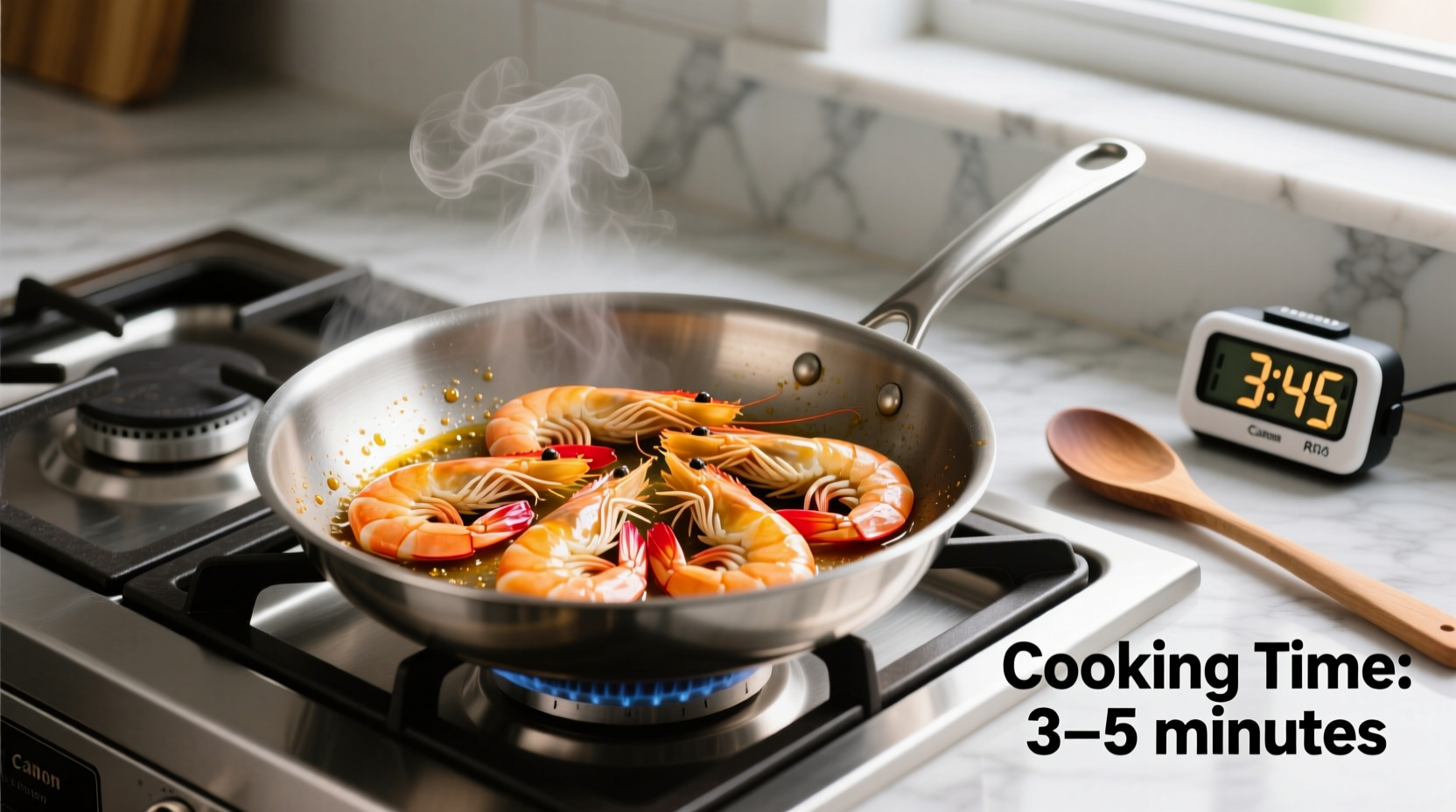Perfectly cooked shrimp makes all the difference between tender, flavorful seafood and rubbery disappointment. This comprehensive guide delivers precise timing for every cooking method, visual doneness indicators, and professional techniques to ensure flawless results every time you prepare this delicate protein.
Shrimp Cooking Time Reference Guide
Understanding the variables that affect cooking time is essential for consistent results. The following chart provides baseline timing for different methods and shrimp sizes:
| Shrimp Size | Boiling | Sautéing | Grilling | Baking |
|---|---|---|---|---|
| Small (31-40 count) | 1.5-2 minutes | 1-2 minutes | 1.5-2 minutes | 6-8 minutes |
| Medium (21-30 count) | 2-3 minutes | 2-3 minutes | 2-3 minutes | 8-10 minutes |
| Large (16-20 count) | 3-4 minutes | 3-4 minutes | 3-4 minutes | 10-12 minutes |
| Jumbo (10-15 count) | 4-5 minutes | 4-5 minutes | 4-5 minutes | 12-15 minutes |
Note: These times assume shrimp are at room temperature. Frozen shrimp will require 30-50% longer cooking time.
Visual Doneness Indicators: Your Most Reliable Guide
While timing provides a helpful framework, visual cues offer the most accurate indication of perfectly cooked shrimp. According to the USDA Food Safety and Inspection Service, shrimp undergoes specific physical changes as it cooks:
- Color transformation: Translucent gray turns to opaque pink with red accents
- Shape change: Straightens slightly then forms a loose "C" shape (tight "O" shape indicates overcooking)
- Texture: Firm but still slightly springy to the touch
- Internal temperature: 120°F (49°C) at thickest part - this will rise to 145°F (63°C) during resting

Factors That Impact Cooking Time
Several variables affect how quickly shrimp cook, requiring adjustments to standard timing:
Shrimp Size and Count
The "count" system (number of shrimp per pound) directly correlates with cooking time. Larger shrimp (lower count numbers) require more time. For example, colossal shrimp (U/10) need nearly twice as long as salad shrimp (51+ count).
Starting Temperature
Shrimp cooked straight from the refrigerator takes 25-40% longer than room-temperature shrimp. Always pat shrimp dry and let them sit at room temperature for 15-20 minutes before cooking for more consistent results.
Cooking Method Variations
Professional chefs at the Culinary Institute of America emphasize that heat intensity significantly impacts cooking time. High-heat methods like sautéing cook shrimp faster than lower-temperature approaches like baking. The CIA's Seafood Guide recommends:
- Sautéing: Medium-high heat in a preheated pan for best sear without overcooking
- Grilling: Direct high heat for 1-2 minutes per side with frequent turning
- Boiling: Submerge in vigorously boiling water, then immediately shock in ice water
Avoiding Common Shrimp Cooking Mistakes
Even experienced home cooks frequently make these errors that compromise shrimp quality:
Overcrowding the Pan
Adding too many shrimp at once drops the pan temperature dramatically, causing shrimp to steam rather than sear. Cook in batches with adequate space between pieces for proper browning.
Ignoring Carryover Cooking
Shrimp continues cooking after removal from heat due to residual heat. Remove shrimp from heat when they're 90% done (slightly translucent in the thickest part) to prevent overcooking during resting.
Moving Shrimp Too Frequently
Constant stirring prevents proper searing. Allow shrimp to sit undisturbed for 60-90 seconds to develop a golden crust before turning.
Food Safety Considerations
Proper cooking is essential for food safety. The FDA Food Code specifies that seafood must reach a minimum internal temperature of 145°F (63°C) or until the flesh is opaque and flakes easily. However, shrimp's delicate texture means you should remove them from heat at 120°F (49°C), as carryover cooking will bring them to the safe temperature during the 2-3 minute resting period.
Undercooked shrimp poses significant health risks, particularly from Vibrio bacteria. Always discard shrimp that remain gray or translucent after cooking, regardless of timing.
Pro Tips for Perfect Shrimp Every Time
Professional chefs use these techniques to consistently achieve restaurant-quality results:
- Dry thoroughly: Pat shrimp completely dry with paper towels before cooking for optimal searing
- Season after cooking: Salt draws out moisture; season after cooking or use a dry rub before
- Rest properly: Let cooked shrimp rest 2-3 minutes to allow juices to redistribute
- Use the right oil: High smoke point oils like avocado or refined olive oil work best for searing
Special Considerations for Different Shrimp Types
Wild-caught versus farm-raised shrimp have different moisture content affecting cooking time. According to research published in the Aquaculture Journal, farm-raised shrimp typically contain 10-15% more moisture, requiring slightly longer cooking to achieve proper texture.
Head-on shrimp cook more slowly than peeled varieties due to the protective shell. When grilling whole shrimp, expect cooking times to increase by approximately 30% compared to peeled shrimp.











 浙公网安备
33010002000092号
浙公网安备
33010002000092号 浙B2-20120091-4
浙B2-20120091-4